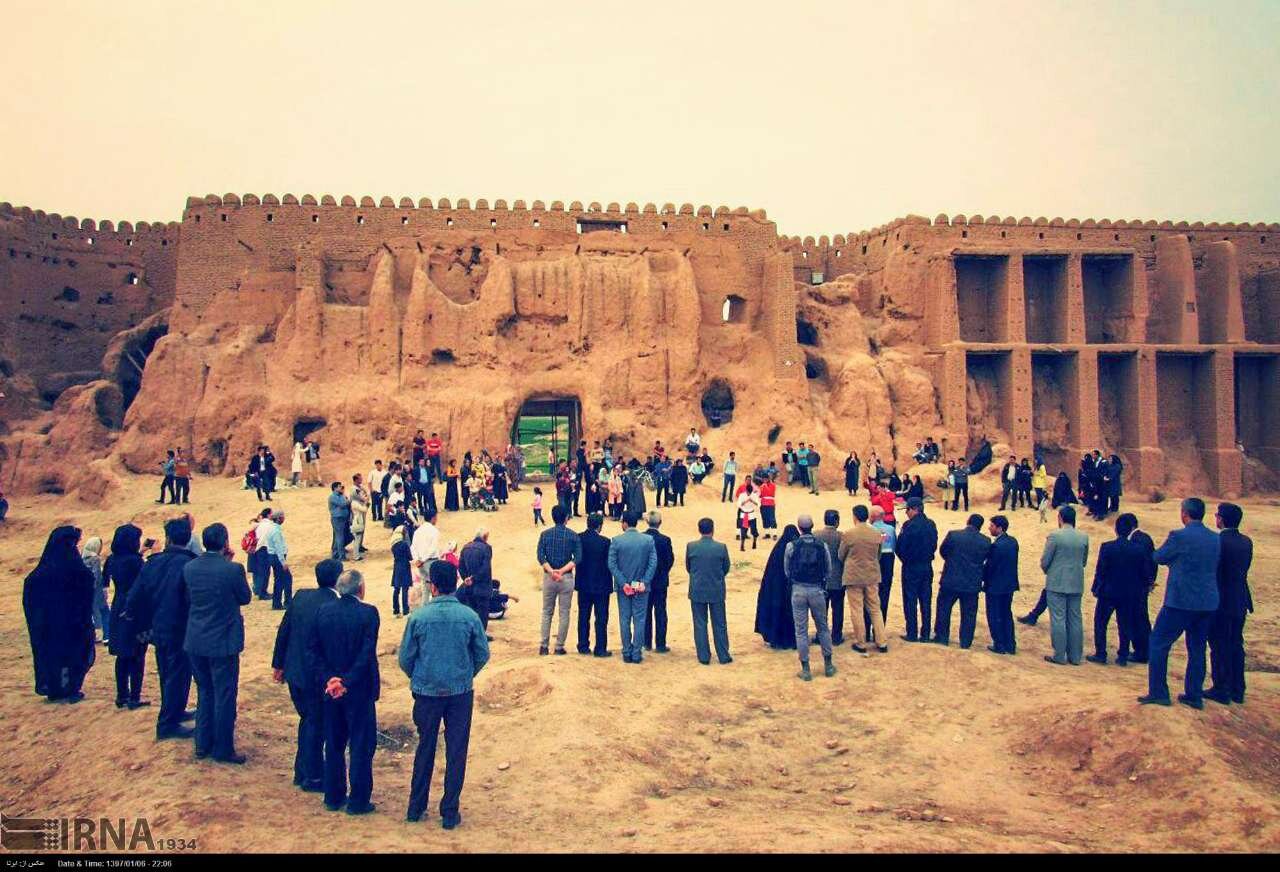Ancient grandeur: the story of Belqeys Castle and its historical complex

TEHRAN – Belqeys Castle is a must-visit destination for those intrigued by Iran’s rich historical heritage.
Spanning an impressive area of over 180 hectares, this fortress is a remarkable example of early Islamic architecture, believed to have been constructed during the Sasanian era.
Its strategic position on a flat plain, surrounded by a deep moat, indicates its historical importance as a defensive stronghold on the ancient Silk Road.
Nestled in a historical fabric, in northeastern Iran, it is renowned as the second-largest adobe monument in the county after the famous Arg-e Bam, which stands tall in the southern Kerman province.
In its heyday, Belqeys Castle was a three-story architectural marvel, fortified by 29 towers each standing at about 11 meters high. These imposing structures highlight the castle's role as a formidable barrier against invasions, safeguarding the bustling trade route that connected the East and West. Although time has reduced the castle to a mud shell, the remnants evoke a sense of the grandeur and strategic importance it once held.
Located about three kilometers southwest of the present-day city of Esfarayen in North Khorasan province, the castle is part of a larger historical complex that includes a variety of fascinating structures. Visitors can explore the remains of a caravanserai, which once provided refuge for weary travelers and traders. The ancient bazaar, a hive of commerce in centuries past, offers a glimpse into the vibrant market life of the time. The pottery kiln showcases the advanced craftsmanship in ceramics, featuring a furnace and intricate niches and domes.
One of the most intriguing parts of the complex is the Sharestan, the public section of the ancient city. Enclosed by a brick wall, Sharestan was home to various neighborhoods, industrial workshops, and workers' quarters. Historical sources point to Tappeh Menar as the most significant public area, believed to have functioned as the city mosque. The discovery of a large brick water reservoir in the southern part of Sharestan underscores the advanced urban planning and infrastructure that supported the city's inhabitants.
The mausoleum of Sheikh Azari and the ancient cemetery add a spiritual dimension to the site, offering insights into the religious practices and final resting places of the people who once thrived here. The archaeological excavations conducted in 2014 and 2015 have unearthed a portion of the interior structure of Belqeys Castle, revealing a well-organized layout of nested rooms with multiple entrances. The rooms, constructed with bricks measuring 5x25x25 centimeters and clay mortar, reflect the meticulous construction techniques of the era.
Visiting Belqeys Castle is more than just a journey through ancient ruins; it may transport you back to a time when the Silk Road was a lifeline of cultural exchange and economic prosperity. The castle's towering remnants, the surrounding historical complex, and the enchanting tales of the past make it a captivating destination for historians, archaeologists, and tourists alike.
As you walk through the remnants of this once-mighty fortress, imagine the bustling activity, the strategic defenses, and the vibrant life that flourished within its walls. Belqeys Castle is not just a relic of the past; it is a window into the rich historical and cultural heritage of northeast Iran, waiting to be explored and appreciated by those who seek to uncover the secrets of ancient civilizations.
AM
Leave a Comment